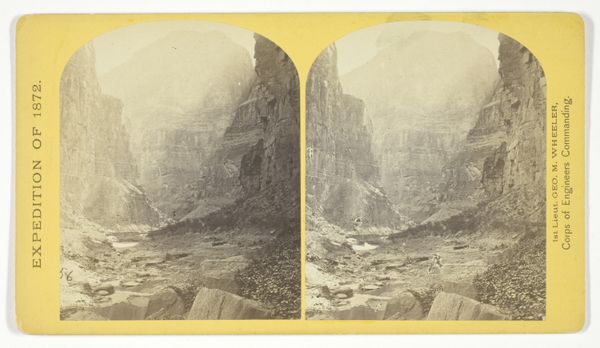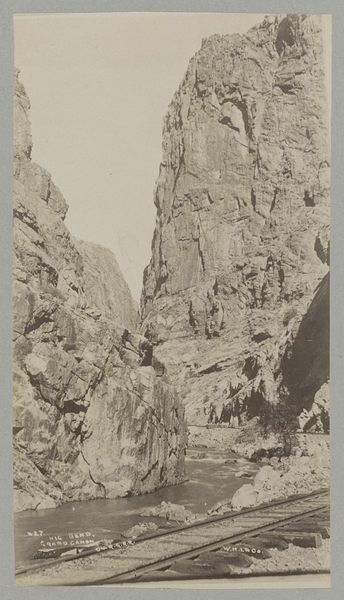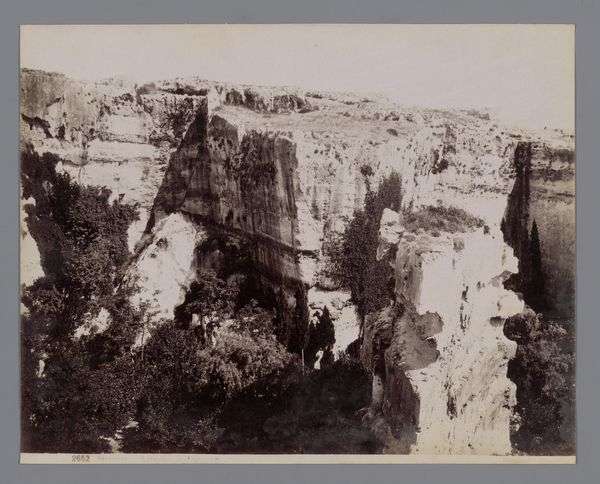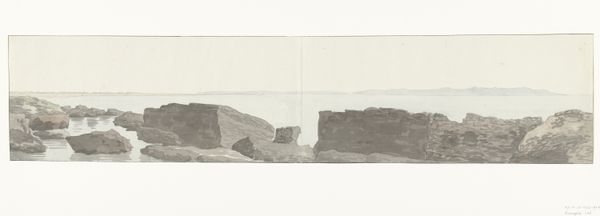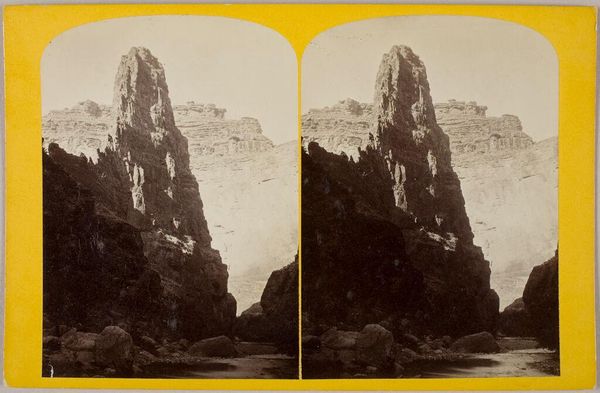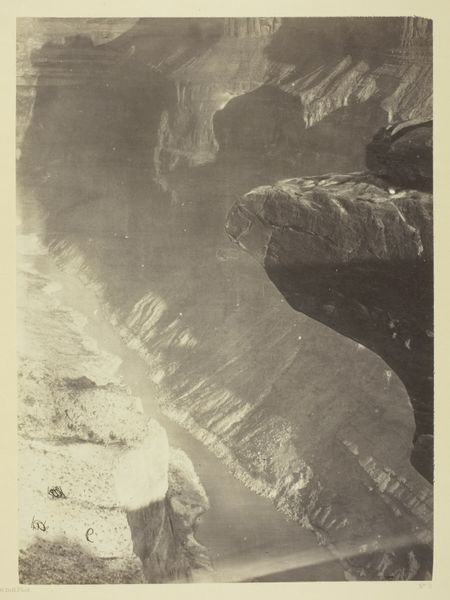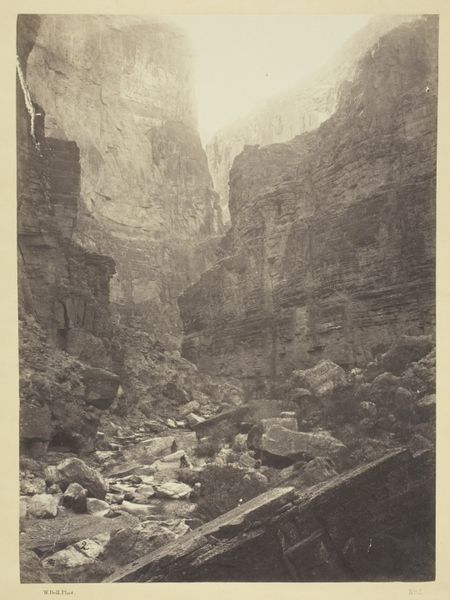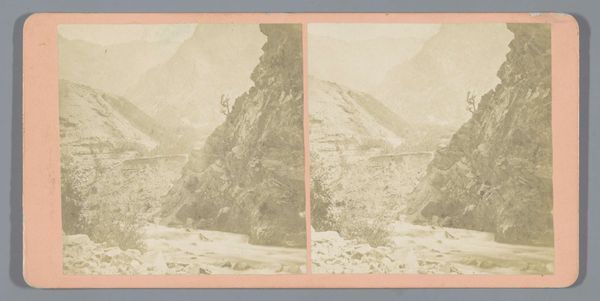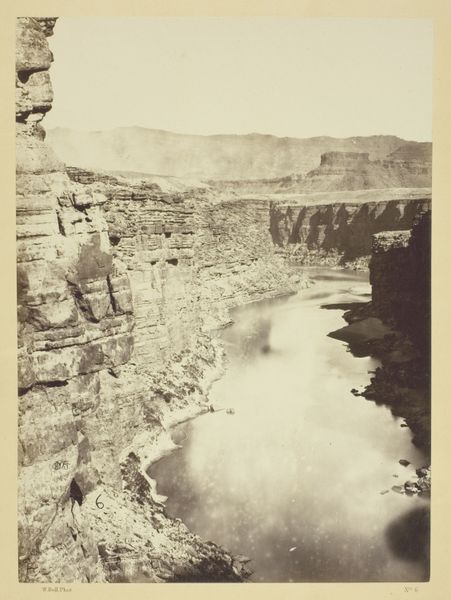
Dimensions: height 108 mm, width 183 mm
Copyright: Rijks Museum: Open Domain
Editor: Here we have William Henry Jackson's "Kloof met een spoorlijn langs de Grand River in Michigan", a photograph from around 1860 to 1900. I find the muted tones create an almost ghostly feeling, and I’m curious about what’s going on with that railway track carved into the landscape. What do you see in this piece? Curator: This image really speaks to the transformative power of industrialization. I'm interested in the very materials used – the photographic emulsion, the paper, the way Jackson harnesses light and shadow. He's not just representing the landscape; he's documenting the profound changes humans are inflicting upon it through material means like the railroad. Think of the labor involved in constructing those tracks, the raw materials extracted, the communities impacted. What's your perspective on the relationship between nature and industry here? Editor: Well, the image does highlight a pretty stark contrast. You have these grand, almost timeless geological formations and then this very deliberate, human-made structure cutting through it. It makes you wonder about the long-term effects of this kind of intervention. Is it sustainable? Curator: Exactly. The photograph, as a physical object, embodies that tension. Jackson’s choice to include the railway forces us to consider the resources, both human and natural, necessary to produce this progress. Even the act of capturing this image is a material process that is embedded in the development of the West. This landscape is no longer sublime, but becomes a commodity itself through extraction. Editor: I never really considered that, seeing the image as part of the process rather than just a record of the landscape. Curator: It is a record, of course, but it's one produced through material processes inherently linked to what it depicts: development, industrial expansion and their associated resource exploitation. It makes you consider photography as an instrument for documenting this transformation. Editor: That’s a perspective shift for me, thanks! I’m starting to think more about how even art plays a role in that material and social context.
Comments
No comments
Be the first to comment and join the conversation on the ultimate creative platform.
